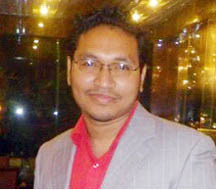By Collin M Constantine
Guyana had experienced positive growth since 2006 and made exceptional strides in its recovery process from the rampant economic contractions and poor standards of living of the past. It is now time to transform and diversify our productive base into more knowledge intensive sectors that enhance economic growth and reduce our external vulnerability.
The local economic structure has undergone little change since independence and its productive base remains largely agricultural. The static economic structure and low value industries offer little incentive for the highly educated to remain in Guyana and extend no invitation to the Diaspora for their return. Dependence on our traditional exports (rice, sugar, bauxite, gold/diamonds and timber) engenders and perpetuates growth volatility, and this leaves us trapped in low value conventional exports (hence, a static economic structure). This is synonymous with the natural resource curse and the Dutch Disease (a widely recorded phenomenon of immense growth volatility provoked by the predominance of natural resources and commodities in a country’s export basket) and could only be rectified by the injection of industrial policies aimed at relaxing and removing constraints to structural diversification.

Heterodox economists contend that the only way the incomes of poor countries could converge with that of the rich states is by producing the goods and services they manufacture. The argument lies in the fact that the scope for productivity growth is enlarged when the less developed states adopt within their product space these sophisticated products (e.g., electronics, high technology goods, etc.). Recent studies show that countries that do this successfully grow faster. Proponents of industrial policy explain that the technologies that produce the sophisticated goods could also manufacture a wide range of similarly sophisticated merchandise and it is this that facilitates diversification and structural change.
Evidence – from South East Asia and many of the OECD countries – suggests that the pattern of genuine development is one where a nation’s productive base is diversified and enables its economic structure to transform into sectors of higher value and necessitates ample use of educated labour. It is this structural dynamism that thrusts the pedals of development in motion and affords society the opportunity to experience higher wages, the rise of corporatization and money markets, improved quality and access to education and health care and all the accompanying elements of development. Any avid investor knows not to put all his eggs into one basket, and this has become the premise of structural change and diversification.
Guyana remains vulnerable because much of its growth originates from the successes of its exports, which are susceptible to erratic booms and busts in commodity world prices. Though the agricultural diversification programme – into non-traditional exports: fruits and vegetables – is a step in the right direction, its total value does not exceed any of Guyana’s traditional exports, thus, it does little to mitigate Guyana’s external vulnerability. It is from this perspective that an industrial policy is warranted as an instigator of economic development by virtue of sectoral diversification into higher value added production.
Despite the fact that the services industry is the largest contributor to Guyana’s GDP, few of its components could be considered exportable. The wholesale and retail industries combined represent the greatest contributor to the sector but does little to absorb the intellectual capital produced at the University of Guyana or expand our productive base. It is of no surprise that the migration rates of the tertiary level educated among us is 86% (IMF Mishra 2006) – it signals low returns to higher education in Guyana, a consequence of poor demand and the structure of our economy. Agriculture is the second largest sector followed by mining and manufacturing.
The idea of an industrial policy, therefore, is to redefine Guyana’s export portfolio beyond our natural endowments (arable land, gold, diamonds, etc.); to build an embedded relationship between the state and private sector to discover the constraints to entrepreneurial activity (particularly entrepreneurship into new higher value added activities) and to generate policy interventions that would mostly likely remove those constraints. Economic restructuring and growth therefore are by-products of policy interventions on the part of government and not necessarily dependent on our natural resources alone. We must then place our energies on the task of building the institutional framework that reduces the information asymmetries between the state and private sector to determine what obstacles and constraints need to be removed to jolt entrepreneurial ingenuity.
(Collin M Constantine is a fourth year economics major and a member of the University of the Guyana Economics Society)








